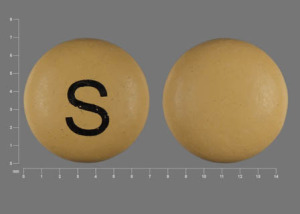Sanctura Interactions
There are 318 drugs known to interact with Sanctura (trospium), along with 6 disease interactions, and 2 alcohol/food interactions. Of the total drug interactions, 5 are major, 297 are moderate, and 16 are minor.
- View all 318 medications that may interact with Sanctura
- View Sanctura alcohol/food interactions (2)
- View Sanctura disease interactions (6)
Most frequently checked interactions
View interaction reports for Sanctura (trospium) and the medicines listed below.
- albuterol
- Ambien (zolpidem)
- amlodipine
- aspirin
- Aspirin Low Strength (aspirin)
- atorvastatin
- baclofen
- Cymbalta (duloxetine)
- Fish Oil (omega-3 polyunsaturated fatty acids)
- Flonase (fluticasone nasal)
- gabapentin
- levothyroxine
- Lexapro (escitalopram)
- Lipitor (atorvastatin)
- lisinopril
- Lyrica (pregabalin)
- melatonin
- metformin
- omeprazole
- oxycodone
- prednisone
- simvastatin
- Singulair (montelukast)
- Synthroid (levothyroxine)
- tramadol
- trazodone
- Vitamin B12 (cyanocobalamin)
- Vitamin D3 (cholecalciferol)
- Xanax (alprazolam)
- Zoloft (sertraline)
Sanctura alcohol/food interactions
There are 2 alcohol/food interactions with Sanctura (trospium).
Sanctura disease interactions
There are 6 disease interactions with Sanctura (trospium) which include:
- gastrointestinal retention
- narrow angle glaucoma
- urinary retention
- alcoholism
- hepatic impairment
- renal impairment
More about Sanctura (trospium)
- Sanctura consumer information
- Compare alternatives
- Reviews (22)
- Drug images
- Side effects
- Dosage information
- During pregnancy
- FDA approval history
- Drug class: urinary antispasmodics
Related treatment guides
Drug Interaction Classification
| Highly clinically significant. Avoid combinations; the risk of the interaction outweighs the benefit. | |
| Moderately clinically significant. Usually avoid combinations; use it only under special circumstances. | |
| Minimally clinically significant. Minimize risk; assess risk and consider an alternative drug, take steps to circumvent the interaction risk and/or institute a monitoring plan. | |
| No interaction information available. |
See also:
Further information
Always consult your healthcare provider to ensure the information displayed on this page applies to your personal circumstances.


